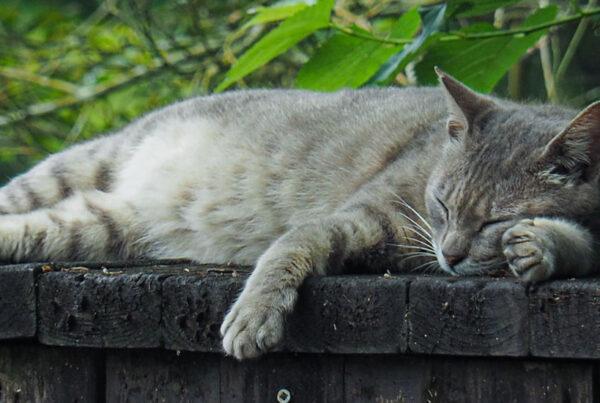The Art of Eating and Walking
TEXT / HAN CHEUNG
PHOTOS / MAGGIE SONG
Put away your cellphone, clear your mind, and focus on the task at hand, no matter how mundane, at Chan Grove’s “Living Zen” retreats.
Being someone who usually scarfs down meals while chatting, reading, or looking at my phone, it was an almost trance-like experience to focus on each bite, analyzing the complex textures and flavors in my mouth and being fully aware of the veggies and rice turning to mush as I chewed.
I didn’t say a word to anyone, and when distracting thoughts arose – such as how I would structure this article, or where I was to meet my friend later – I managed to refocus on the food. Luckily, I did have prior experience meditating, but it still required considerable effort to stay focused.
By the time I finally cleaned my bowl and looked around, most people in our group had already moved on to the next activity. I’m usually the first one to finish during group meals. Who knew that the simple act of eating could be so mesmerizing?
Such mundane, everyday activities make up the core of typical Zen-living retreats, where a program can include such things as eating, walking, sipping tea, listening to music, and sweeping leaves. The point is that when you perform each task, down to the simple act of folding a towel, your mind is focused on the action of the moment. In Taiwan you don’t have to go to some hidden place in a remote mountain area to experience this. Chan Grove, a tranquil monastery founded by Zen Master Guoru, is just a short bus ride from the MRT Beitou Station in the northwest section of Taipei City.

Master Guoru was the first disciple of the late Master Sheng Yen, who founded Dharma Drum Mountain (www.dharmadrum.org), one of the most influential organizations in Chinese Buddhism, with affiliated temples and centers in 14 countries. Dharma Drum, with its headquarters located on the North Coast in the Jinshan District of New Taipei City, is one of the “Four Great Mountains” of Buddhism in Taiwan, along with Fo Guang Shan (www.fgs.org.tw), Tzu Chi Foundation (www.tzuchi.org), and Chung Tai Shan Monastery (www.ctworld.org.tw). While Buddhism was brought to Taiwan by Chinese immigrants in the 1600s, key influential figures such as Sheng Yen fled to Taiwan in 1949 after the Communist takeover of China.

Government statistics show that about 35 percent of Taiwanese self-identify as Buddhists. But this number is probably much higher if considering people who practice a blend of Daoism, Buddhism, and Confucianism along with a smattering of elements from other folk traditions. It’s not uncommon to see temples around the island in which both Daoist and Buddhist deities are worshipped. The presence of Buddhism has also made Taiwan one of the most vegan- or vegetarian-friendly destinations in Asia.
As a result, it’s pretty easy to get a cursory view of Buddhism just by strolling along the streets of cities in Taiwan. But for those who wish to delve deeper, it’s definitely a good idea to spend some time at one of the “Four Great Mountains,” or a smaller operation such as Chan Grove.

After Master Sheng Yen died in 2009, Master Guoru started building Chan Grove in the foothills of Yangmingshan, the mountain massif on the northern side of Taipei City. Chan Buddhism arose in China during the Tang Dynasty (618 ~ 907AD), and later spread to Japan, where it became known as Zen Buddhism, which is the term Westerners today are more familiar with. According to Dharma Drum’s website, Chan refers to a “direct awakening to interconnectedness and impermanence, and the consequent arising of Buddhist wisdom and compassion. This awakening experience is inexpressible in words.”
The site continues: “The teaching starts with knowing one’s self, but the process of practice leads to a discovery of our interconnectedness with others. Direct personal experience of Chan brings about the actualization of wisdom and compassion, which leads to peace and understanding in the world.”
In addition to meditation, Chan should be practiced at all times as part of life, and should not be separated from everyday living. The Zen-living retreat fits right in with this concept, where practitioners learn to be mindful in conducting daily tasks so that they can easily apply the technique in their life after the retreat.
The Zen-living retreat I took part in was a one-day version of the usual multiple-day workshop focused on reducing stress. The religious aspect was not emphasized, with most of the activities and discussions revolving solely around mindfulness. Also available are ten-, seven-, and three-day Zen retreats, which can include a variety of activities such as children’s events, specialized workshops such as flower arranging and paper cutting, as well as regular study groups and talks on Buddhism. More formal religious events such as Dharma assemblies also take place throughout the year.

On the Chan Grove website (www.changrove.org; Chinese) the retreat I experienced is described as a way to “help busy entrepreneurs and office workers to experience the benefits of Zen in limited time and learn how to calm their body and spirit.”
The monastery’s shuttle bus picked me up, along with two travel companions, at the MRT Beitou Station on a Saturday at 8:30am. I had made sure that I had replied to all my e-mails and taken care of all important personal tasks beforehand, as the use of mobile devices such as smartphones is not permitted during the time of the retreat. Worrying about such things felt slightly ridiculous, for I was only going to be without my phone for the next eight hours, as opposed to someone who signs up for a multi-day retreat. I have to admit, I’m a slave to my phone. Apart from leaving your electronic devices at home, you also have to deal with the fact that talking is not permitted unless it’s absolutely necessary, or when there is a group discussion. Reading newspapers or magazines is also not an option. I noticed, however, that the no-talking rule wasn’t strictly enforced during my retreat, though it’s no doubt best to follow it if you want to get the most out of the experience.
It goes without saying that smoking, drinking, using drugs, and eating meat is strictly prohibited. Since it can get chilly in the mountains during the cooler months of the year, visitors are advised to bring some extra layers of clothing and a sleeping bag (if signing up for a multi-day retreat), as you will be sleeping on wooden floors.
We were cheerfully greeted by Master Chang Zhen, who led us up the stone steps to the Zen hall of the complex, a minimalistic but expansive wood, glass, and stone structure that is in line with Beitou’s heritage Japanese-style architecture. The environment had an immediate calming effect, and all one could hear was the sound of water flowing from a pond, birds chirping, and the occasional sounds of a set of large wind chimes. It was drizzling, but so lightly that the tiny raindrops seemed to dance in the air, adding to the air of mysticism.

The person leading our retreat was Chen Wu-hsiung, who is an expert in designing this type of Zen-living activity. The other participants were already deep in meditation as we entered the hall. It was a bit chilly, but towels were supplied which we could use to cover ourselves. Chang Zhen and Chen explained the basics of what we were going to do that day. First up were some slow-motion stretching exercises to get into the swing of things, and we were then asked to take our meditation cushion and towels outside to the long corridors that surround the main hall. Chen reminded us to be mindful, even when folding the towels.

I had already lost track of time by that point, and we then spent the next while walking clockwise around the hall. We started very slowly, putting all our energy into each step, and the pace gradually picked up. Back inside, tea drinking was next. We concentrated all our senses – watching the dried tea leaves expand and the water change color, feeling the heat and texture of the cup in our hands, taking in the aroma of the tea, and finally taking a sip and noticing how the flavor changed, from first contact to aftertaste.

Between sips, I looked at the lush greenery and Buddha statues through a window, and my ears were also attuned to the music playing from another room as well as the sound of the flowing water and chimes outside.

We repeated the slow, deliberate motions of the tea drinking and taking in of the surrounding environment several times before Chen announced that it was time for lunch.

As mentioned earlier, I was so taken in by the “mindful eating” experience that I was late to the following activity, which for myself and a few others was sweeping leaves. Other participants were assigned different tasks, such as washing dishes. At this point, we didn’t need to be reminded to focus on the task at hand any more.


The day concluded with a showing of the film Peaceful Warrior, a semi-autobiographical account of how Dan Millman, a once arrogant and egotistic gymnast at UC Berkeley university in the US, was able to recover from shattering his leg and learn the art of being fully in the present to win a national championship. True to the nature of this workshop, at first glance this movie had nothing at all to do with Buddhism. But the exercises that Millman undertook under the guidance of his mysterious mentor resonated perfectly with what we had been doing that day. A lively discussion followed, and I left feeling completely calm, free of the usual excessive and scattered thoughts that assault my brain.
At the moment of writing this, I don’t know how long I can maintain this state, as I am now once again immersed in the chaos of my regular life in Taipei. But I know that my daily tasks such as eating and walking will never be experienced in the same way again.
Chan Grove (祖師禪林)
Add: No. 198, Fuxing 3rd Rd., Beitou Dist., Taipei City
(台北市北投區復興三路198號)
Tel: (02) 2891-5205
Website: www.changrove.org

About the author

Han Cheung
Han Cheung moved back to his adolescent stomping grounds of Taiwan in 2015 from frigid Wyoming, where he was the editor of the small town Rawlins Daily Times. He has a Master’s in Journalism from the University of Missouri and has reporting experience in the US, Latin America, and Taiwan.















